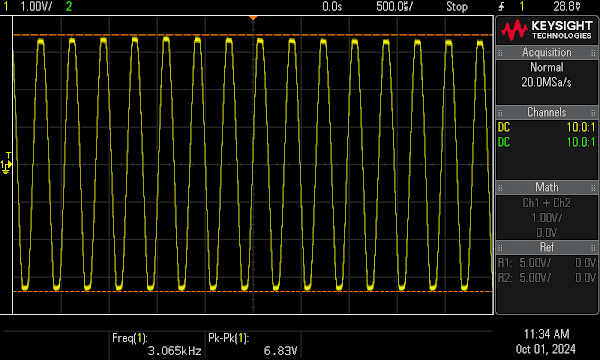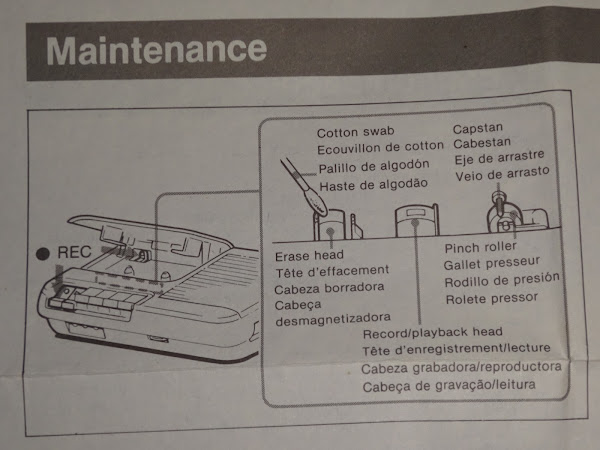This is a Sony TCM-818. A very simple mono cassette recorder, ideal for use with 1980s computers that load programs from tape like the ZX81 or ZX Spectrum etc., or modern recreations like the Minstrel 2 or 3 etc.
It was introduced into Sony's range in 1989.
It was replaced by the face-lifted TCM-919 in 1993
A common sight in Argos catalogues of the time, they still had versions of these into the 2000s. See the important note - you can't plug one of these into your Commodore or Atari computer.
Argos no longer sell these, but you can pick them up for £20-£30 on ebay, and they generally just work with nothing more than a wipe over with a damp cloth.
These are usually the model I recommend if anyone wants a decent cassette recorder to use with a Minstrel kit. I also can't resist picking them up if I see them cheap on ebay. Always handy to have a few spares.......
Here is one I have just received, a boxed one, which is nice. (credit to the seller for packing this very well)
Must remember to fill in the warranty card.....
No instructions in this one, but give me a minute, I think I have another boxed one somewhere.
Ah yes, and it even has the Argos catalogue number seen above.
That one does have the instructions. For some reason, it's a giant fold out sheet like a road map.
I had been looking for another boxed one to see if it might include the handle. I don't need the handle, I wouldn't use it, but none of mine have handles. I might have removed all the handles years ago, but apparently all the UK models should have included one?
Features
The Sony TCM-818 is a very simple old fashioned design that suits this application perfectly. The amplifier that is used to drive the internal speaker also drives the earphone. That means you get a good strong drive signal which works well with the simple input circuits of those computers, and a nice volume wheel to twist.
It also has the standard arrangement of two 3.5mm jacks for Mic and Ear, and a 2.5mm jack for motor control, which means you can use these with a BBC, MSX or an Oric.
And yes, although most of the ones you see are black, they did make a white version to match for BBC and Oric users.
The easiest way to test one of these is with a music cassette, preferably something appropriately 80s.
It is usually very easy to tell if it is fast or slow or if there is significant wow and flutter or noise. (but maybe try a rubbish tape first in case it chews it up, before getting the Dire Straits out)
If you want to get a bit more scientific, you can use a test tone tape.
This one has a 3KHz tone recorded on it, so you can do various tests. The first one is signal level. At the maximum volume it has just started to clip.
Turning it down a touch and it's fine.
You can see why I like these, that's a solid nearly 7V peak to peak, not the 1V line level you get these days.
The 'scope also confirms the frequency is fairly close to the expected 3KHz.
Maintenance
Any cassette player usually benefits from an occasional head clean, particularly if it is new to you, and it might never have been cleaned before.
You can use a tape such as this one
Or just some IPA and a cotton bud / Q-tip as it describes in the manual.
Does it make a difference? Well, as I had this setup, I went through a few of these, and one of them was showing about 4.5V at maximum volume. I ran through the head cleaner tape and tried again. And there you go, up to 6V. So yes, it does make a difference.
The azimuth does not need adjusting. Please don't adjust the azimuth. The only time I ever need to adjust azimuth is if someone has previously moved it out of adjustment.
You can use the test tone tapes with a frequency counter, an oscilloscope, or you could use a PC sound card to record a sample and use various tools to analyse the signal.
Audacity has a Spectrum analyser, and here you can see the central tone, alongside the harmonics.
That all looks good.
Here I was running from mains, I was interested to see if there was a peak at 50Hz from mains noise, but it seems fine.
These things used to be everywhere, but I never seem to be able to find one when I need it.
They used to just be called "cassette recorder mains leads", but now you would need to search for "figure of 8" or type C7.
The standard TCM-818 can be powered from mains or using four seashells.
Sorry, four C cells.
I generally use battery power as that should give a cleaner signal and should remove any potential issues with mains noise or ground loops etc. (although this design is isolated using a transformer).
The only problem is that C cells are not very convenient these days.
I don't like using non-rechargeable batteries these days, so I normally use these adapters for rechargeable AA cells.
That means I can just recharge the AA cells as required.
However, they are quite a faff to fit in as they keep jumping out.
Next week, in the part 2, I will look at updating my tattiest work horse TCM-818 with a more convenient power source.
Advertisements
I have reopened my Tindie store and have new batches of Minstrel 2 and 3 kits, for ZX81 case or standalone with keyboard, and ZXpand microSD card interface.
From there I can ship worldwide.
I will slowly be moving things over there from my SellMyRetro store, so if there is anything that you want, let me know and I'll add it.
More info can be found here:
Patreon
You can support me via Patreon, and get access to advance previews of posts like this and behind the scenes updates. These are often in more detail than I can fit in here, and some of these posts contain bits from several Patreon posts. This also includes access to my Patreon only Discord server for even more regular updates.






























